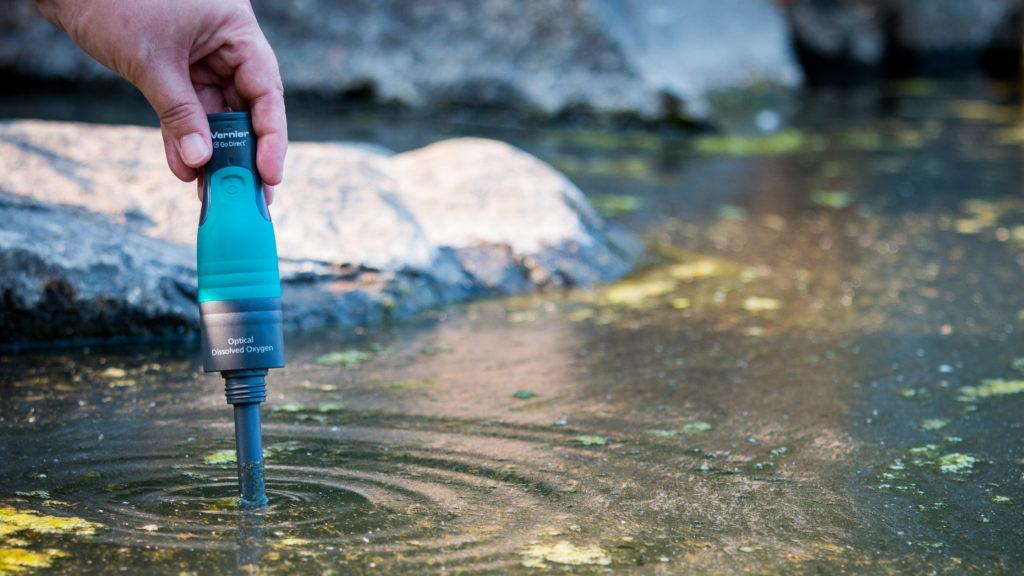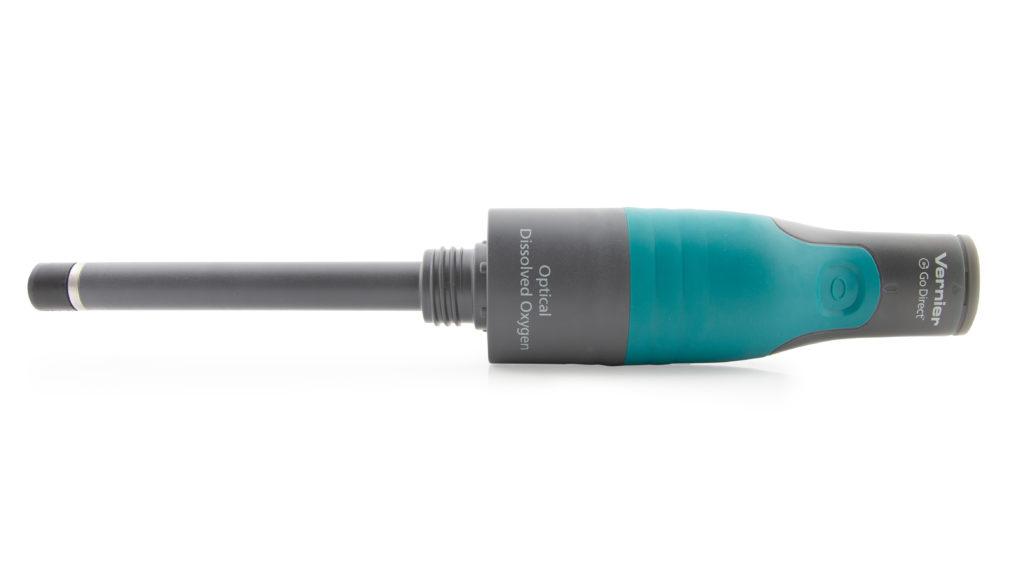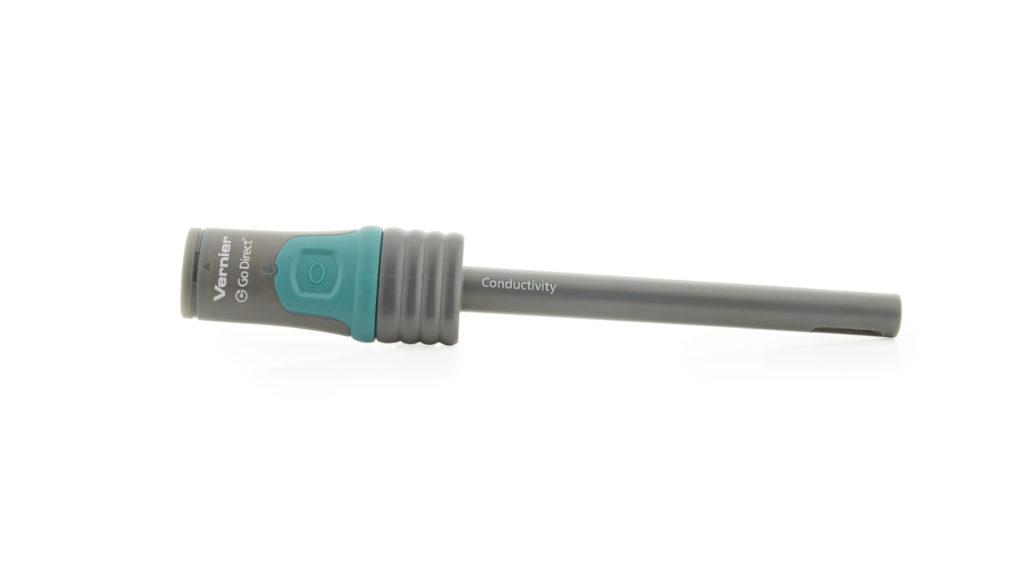
Do you teach environmental chemistry? Are you looking for lab experiment ideas and equipment?
Students taking environmental chemistry will learn basic techniques for chemical analysis of environmental samples, including air, water and soil. Many of these experiments may take place in the field requiring rugged and portable equipment. These Go Direct® Sensors connect directly to your mobile device, Chromebook™, or computer using our free Graphical Analysis app or Spectral Analysis app. The sensors can be used wired via USB or wirelessly via Bluetooth® wireless technology, allowing you to choose the best solution.
Here are five products from Vernier, selected by our experts, for environmental chemistry.
-
Go Direct Tris-Compatible Flat pH Sensor

The flat glass shape of the Go Direct Tris-Compatible Flat pH Sensor is useful for measuring the pH of semisolids such as soil slurries. It features a sealed, gel-filled, double-junction electrode, making it compatible with Tris buffers and solutions containing proteins or sulfides.
Example experiments:
- Measure soil pH
- Investigate the effect of acid rain on soil
- Understand the role of buffers
-
Go Direct Dissolved Oxygen Probe

The Go Direct Optical Dissolved Oxygen Probe combines the power of multiple sensors to measure dissolved oxygen, water temperature, and atmospheric pressure. The Go Direct Optical Dissolved Oxygen Probe uses luminescent technology to provide fast, easy, and accurate results. This waterproof probe is perfect for the field or for the laboratory.
Example experiments:
- Investigate the relationship between temperature and dissolved oxygen in water
- Measure primary productivity or biological/biochemical oxygen demand
- Monitor watersheds over time
-
Go Direct Ion-Selective Electrodes (ISEs)
Our Go Direct family of Ion-Selective Electrodes are great for monitoring five environmentally important ions: calcium (Ca2+), chloride (Cl–), ammonium (NH4+), nitrate (NO3–), and potassium (K+). These are combination-style, non-refillable, gel-filled electrodes with the option to report measurements in mV or mg/L.
Example experiments:
- Measure changes in nitrate concentration due to acidic rainfall or fertilizer runoff from fields
- Study changes in levels of ammonium ions introduced from fertilizers
- Quantify chloride in ocean water
- Use the calcium concentration to evaluate water hardness
- Investigate potassium levels in NPK fertilizers
-
Go Direct Conductivity

Go Direct Conductivity Probe determines the ionic content of an aqueous solution by measuring its electrical conductivity. It features a built-in temperature sensor to simultaneously read conductivity and temperature. Automatic temperature compensation allows students to calibrate the probe in the lab and then make measurements outdoors without temperature changes affecting data. The Go Direct Conductivity Probe has a range of 0 to 20,000 μS/cm (0 to 10,000 mg/L TDS) to provide optimal precision in any given range.
Example experiments:
- Use conductivity to study soil salinity
- Measure total dissolved solids (TDS)
- Investigate the difference between ionic and molecular compounds, strong and weak acids, or ionic compounds that yield different ratios of ions.
-
Go Direct SpectroVis® Plus Spectrophotometer

The Go Direct SpectroVis Plus is a spectrophotometer with a range of 380–950 nm. This device can quickly collect a full spectrum (absorbance, percent transmission, or fluorescence).
Example experiments:
- Select a single wavelength for colorimetric assays (e.g., total phosphates, lead, iron)
- Use the Spectrophotometer Optical Fiber to measure emissions from flame tests or other light sources
Check out Environmental Science and Water Quality for additional options. Everything we offer includes our unparalleled customer service, technical support, and resources, so you are always supported when integrating our technology.

